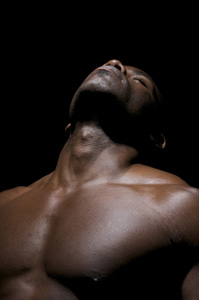Pectoral Muscle Pain
The Facts About Pectoral Muscle Pain
There are a variety of reasons for a person to develop pectoral muscle pain. Many people who experience left pectoral muscle pain may be quick to think they are having a heart attack; however, a person can injure or strain their pectoral muscle inducing feelings of pain and pressure. A pain in your left chest area is not always due to heart problems. Throughout this article we will examine all you need to know about the pectoral muscle and the associated pains.
The pectoral muscle (chest muscle) refers to thick muscle that is located in the front portion of your left chest area (also know as the chest wall). This muscle is often larger in males when they exercise and work out on a regular basis, while lying under the female breast. The muscle assists with upper arm movement as well as minor shoulder movements. Due to its frequent use and the determination of many guys to increase the size of this muscle, it is likely to be injured in a variety of different situations.
Anyone who lifts weights on a continuous basis has a higher likelihood of pulling or straining this muscle, which would result in pectoral muscle pain. However, someone who plays high contact sports such as hockey or football is also able to strain this muscle relatively easily. Due to the likelihood of injury for those engaging in bodybuilding and intense sports, it is essential to understand these risks to prevent unnecessary assumptions that it is a more serious situation.
Someone with pectoral muscle pain probably has a strained chest muscle. This means that the muscle itself is torn due to being stretched beyond its elasticity capabilities. One way to help avoid this situation is by adequately warming up and stretching this muscle before working out and lifting weights. It would also be essential to warm this muscle up before playing contact sports. It is unlikely that someone playing a sport or even working out will know they strained this muscle until after they are relaxed and reduces their high levels of adrenaline.
Anytime there is a pull or strain of this muscle you can expect the pain to be accompanied by bruising and even swelling. Moving your arms may be noticeably painful since this muscle controls those arm movements as we discussed earlier in the article. However, rest assured that this situation is minor and is unlikely to be severe, especially if occurring after an extensive workout session.
The most important treatment for this sort of injury is to avoid moving the associated arm as much as possible and allow your muscle to rest. Do not work out until the muscle is completely healed to prevent a more serious injury that could require surgery. Increase the amount of protein you intake in order to help repair the injured muscle quicker. Swelling and over the counter pain medicine can be used to decrease the inflammation. Again, make sure your muscle is completely healed and is no longer tender to the touch before working out that part of your body again.
In conclusion, there are a variety of ways for a person to injure his or her pectoral muscle. The injury can result from working our or playing contact sports without proper warming up and stretching. Regardless of the cause, strained and pulled muscle in the chest region are likely to result in pectoral muscle pain that should be treated with rest, ice, and anti-inflammatory medication. If pain persists or exists with other symptoms, contact a doctor to ensure that the symptoms are due to a muscle strain and not something more severe.
